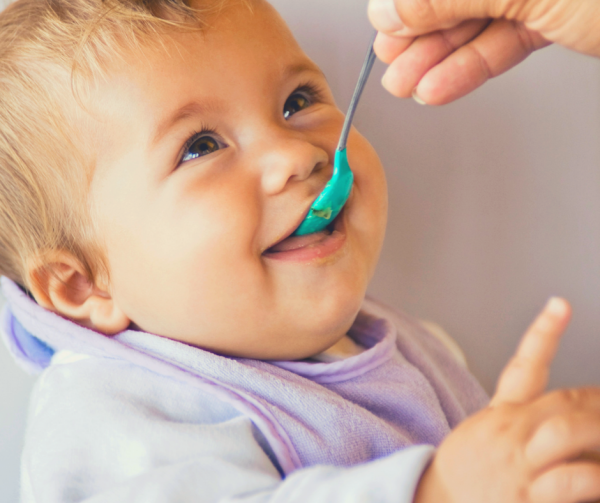[et_pb_section fb_built=”1″ admin_label=”section” _builder_version=”4.16″ global_colors_info=”{}”][et_pb_row admin_label=”row” _builder_version=”4.16″ background_size=”initial” background_position=”top_left” background_repeat=”repeat” global_colors_info=”{}”][et_pb_column type=”4_4″ _builder_version=”4.16″ custom_padding=”|||” global_colors_info=”{}” custom_padding__hover=”|||”][et_pb_text admin_label=”Text” _builder_version=”4.20.0″ background_size=”initial” background_position=”top_left” background_repeat=”repeat” hover_enabled=”0″ use_border_color=”off” border_color=”#ffffff” border_style=”solid” global_colors_info=”{}” background_color=”rgba(255,255,255,0.75)” sticky_enabled=”0″]
Feeding Therapy
Feeding Therapy
We understand the impact oral motor and sensory difficulties that accompany feeding challenges and the complex interactions between the two. We address your child in a holistic way, carefully considering any sensory and/or oral motor delays that may be impacting your child’s progress and focus on making exploring and accepting new foods fun again!. Additionally, we have specialized training in understanding the impact tongue and/or lip ties can have on early feeding and mouth development.
If your child is experiencing any of the following, they may benefit from a feeding evaluation and/or feeding therapy:
-Delay in meeting feeding milestones
-“Picky Eating”
-Difficult mealtime behaviors and extended mealtimes
-Poor weight gain
-Difficulty self-feeding
-Avoidance of certain textures
-Difficulty transitioning to baby foods, solid foods, finger foods
-Accepts less than 20 foods
Oral Motor and Feeding Developmental Milestones
2½ – 3 ½ MONTHS OF AGE
Steady head control achieved
Rooting, gag, sucking, phasic bite reflex, palmomental reflex, transverse tongue reflex
Demonstrates many reflexes to protect the airway
Responds to stimulation in and around the mouth
Consumes breast milk or formula using a nipple
Coordinates breath support with 2-3 sucks of liquid before swallowing and breathing
4-6 MONTHS OF AGE
Beginning hand to mouth play (independent oral exploration of objects)
Increased reaching skills
Reaches for spoon when hungry
Opens mouth when spoon approaches or touches
Initial difficulty moving food back, which is active, rather than through changes in pressure
Tongue used to move purees to back of mouth
Tongue moves back and forth as food is introduced
Sucking foods rather than phasic biting
Able to keep foods in mouth vs. being re-fed
Munching pattern may appear near 6 months
Brings both hands up to clasp the bottle but requires some assistance
Consumes rice cereal or pureed fruit and pureed vegetable baby foods
Eats from a small infant/toddler spoon
6-7 MONTHS OF AGE
Trunk control sufficient for independent sitting for greater than 3-5 seconds
Stable head control in sitting (no head bobbing)
Transfers toys and food from one hand to the other
(7-9 months)
Lip closure supports movement of bolus to pharyngeal area
Able to bring top lip down on spoon to remove foods
With assist, able to break off pieces of meltable foods
Consistent tongue lateralization seen when foods presented to sides of tongue
(6-9 months)
Holds the bottle independently
Cleans the spoon with the upper lip
Eats pureed meats and a variety of pureed baby foods
8-10 MONTHS OF AGE
Trunk rotation and weight shift
Beginning to move in and out of positions
Voluntary release patterns
Uses fingers to rake food toward self
Puts finger in mouth to move food and keep it in
(7-9 months)
Mature tongue lateralization emerging
Active movement of foods from side of mouth to central tongue groove and back
Able to transition to slightly more texture (small bumps)
Chewing softer foods
10-12 MONTHS OF AGE
Independent sitting in a variety of positions
Pincer grasp developing
Pokes food with index finger
Uses fingers to self-feed soft, chopped foods
Clearing food off of lips emerges
Simple tongue protrusion may occur
More controlled biting, isolated from body movements
Full transfer of foods from sides across midline occurs, without difficulty
Rotary chewing begins to emerge
(9-12 months)
Demonstrates lip closure when swallowing liquids and soft solids
Begin self-feed by using fingers to grab (ie, soft crackers, cereal-Cheerios)
Begins to experiment drinking liquids from a sippy cup
Begins to consume mashed table foods
Drinks out of a sippy cup and attempts to hold the handle independently
Begins to drink from a straw
14-16 MONTHS OF AGE
Efficient finger feeding
Practicing utensil use versus effective use for volume
Typically “co-feeding” with a parent
Chews and swallows firmer foods without choking
Chews foods that produce juice
Able to keep most bites in mouth during chewing
Coordinates sucking, swallowing, and breathing patterns for longer sequences
Begins to eat finely chopped table foods
Bites through crunchy foods such as cookies and crackers
Moves food from side to side of the mouth during chewing
18-24 MONTHS OF AGE
Able to pick up, dip, and bring foods to mouth
Increasing utensil use (not efficient until after 24 months of age)
Scoops purees with utensil and brings to mouth
Feeds using a spoon but may still require assistance
[/et_pb_text][/et_pb_column][/et_pb_row][et_pb_row admin_label=”Row” _builder_version=”4.16″ background_size=”initial” background_position=”top_left” background_repeat=”repeat” global_colors_info=”{}”][et_pb_column type=”4_4″ _builder_version=”4.16″ custom_padding=”|||” global_colors_info=”{}” custom_padding__hover=”|||”][/et_pb_column][/et_pb_row][/et_pb_section]
